Spotted but Nary a Spotting
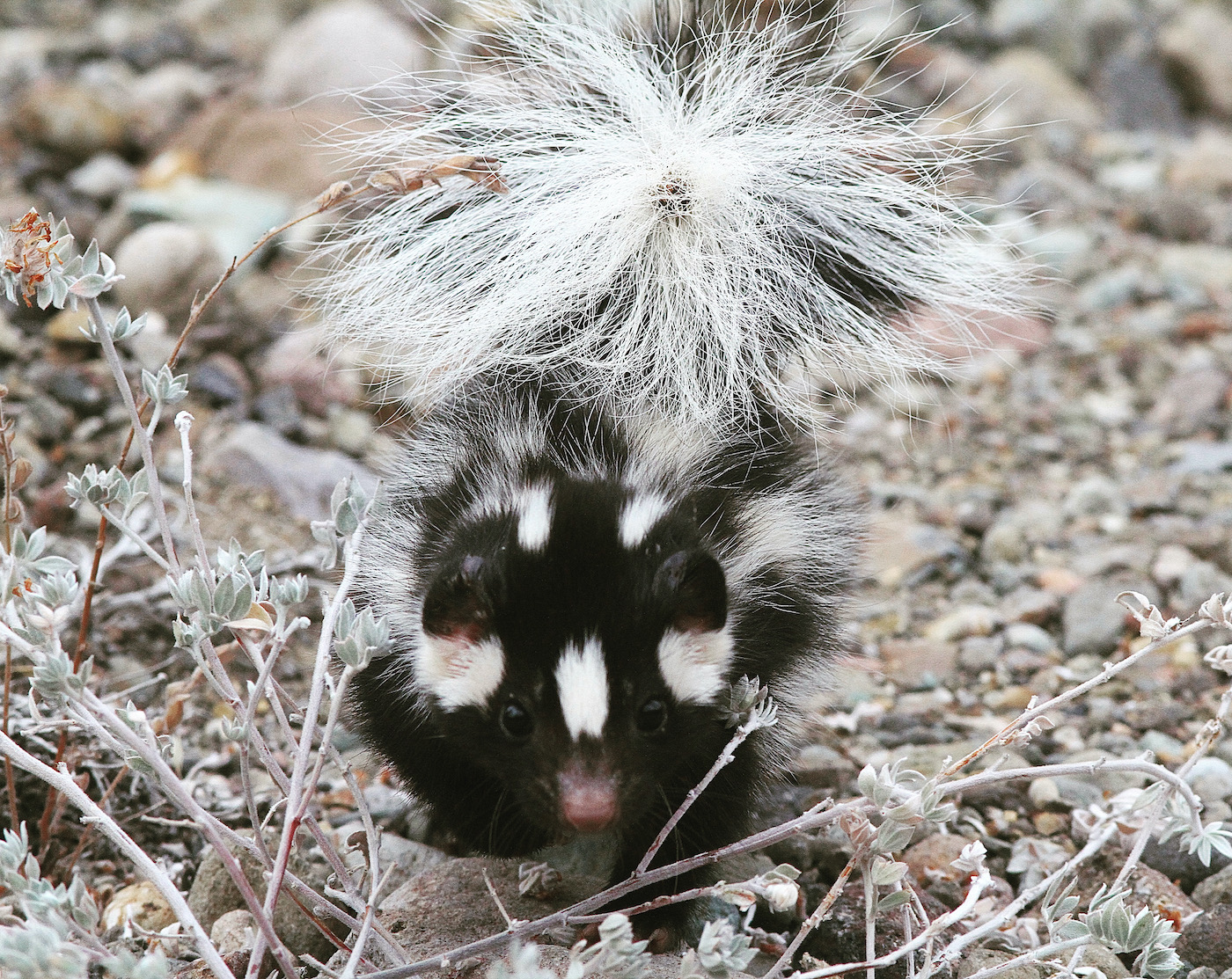
The reflection from my headlamp glistened off the wet of its black button snout as we gazed into each other’s eyes under a star-filled night.
I felt the thumps on my picnic table that doubled as my bed at around 2 am on a windswept Santa Rosa Island. I had slept soundly until then, lulled to sleep by the surf cracking on the beach at the bottom of Water Canyon. But as I rolled over, I was quite surprised when I realized that all that loud humping came from a small, nocturnal, endemic island spotted skunk.
Hoping it wasn’t about to turn and spray point-blank into my sleepy face, I rolled out of my sleeping bag on the opposite side of the picnic table. The tiny skunk didn’t scare easily and barely budged from its bench after I landed on the ground. When it finished sniffing and foraging about, it hopped off the bench and over to its two kits, waiting in the shadows. The little ones were no bigger than a softball and adorable.
Smell First
After the Island Packer ferry leaves the islands, and all goes quiet in the canyons near the campgrounds, darkness descends quickly in the canyons, especially during the winter months. This is usually the best time to sight an island spotted skunk. However, you can typically smell them before you spot one. Even then sightings are fleeting as the creatures tend to stay close to dense island foliage.
The island fox is the largest land predator on the island and weighs an intimidating four pounds. The island spotted skunk weighs only a pound and sometimes resembles nothing more than a battery-operated toy. The skunk may be cuter than an island fox as it tends to hop around instead of run.
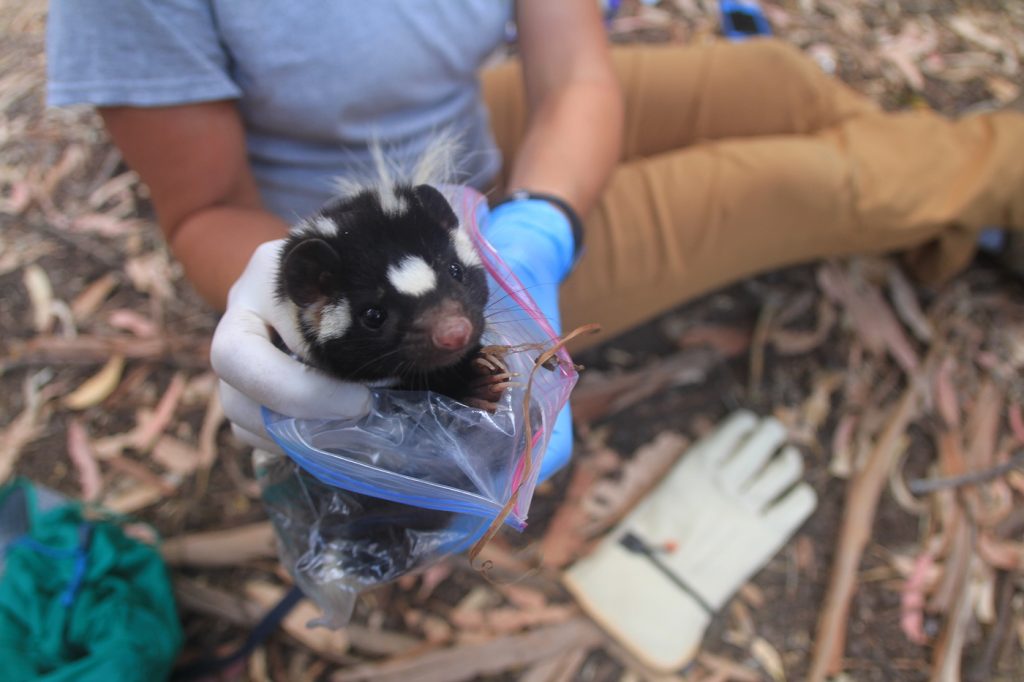
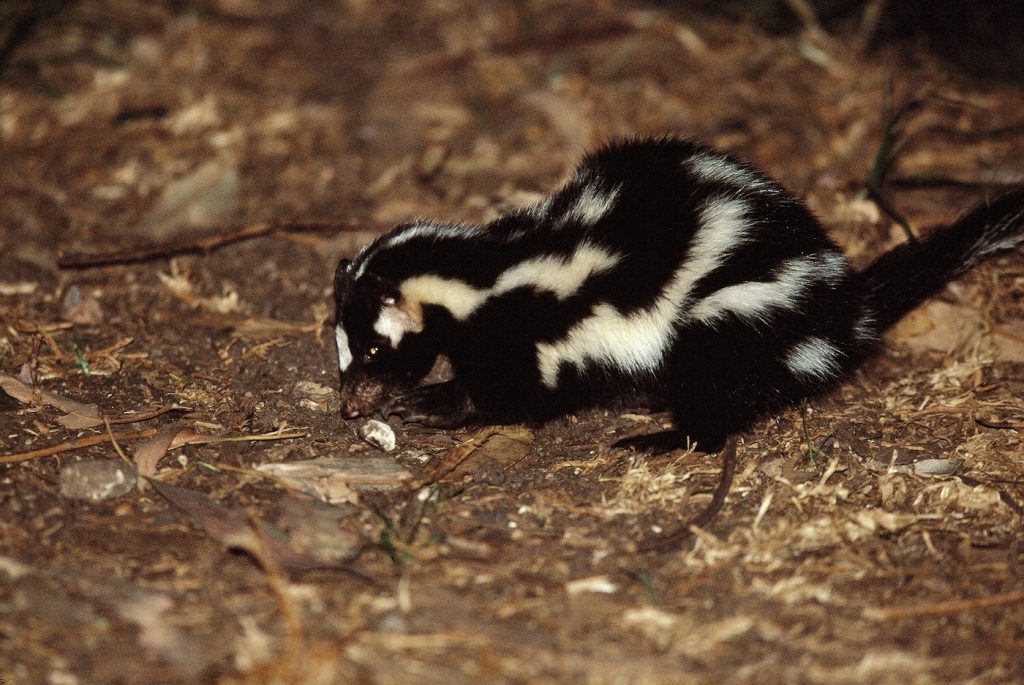
Once, I tagged along with two wildlife biologists who were trapping island foxes on Santa Cruz Island to gauge the animals’ population density. The biologists accidentally trapped an island spotted skunk. You can always tell when a skunk has been trapped. Island foxes tend to settle and simply wait to be handled then released. Skunks on the other hand hop up and down inside the cage and resemble an impatient Tasmanian devil.
On one occasion, a biologist who must have been new to trapping skunks didn’t handle this particular skunk correctly; he allowed it to wiggle so that its rump faced out of the cage and toward the biologist. Needless to say, things didn’t end well for the biologist. He got a face full of the sulfur-based organic compound called thiols.
That’s nothing to sneeze at. Mainland skunks can possess high concentrations of a spray that can be toxic and even fatal to humans. It’s been compared to having the effect of tear gas. Yet, the spray of island skunks is not as potent as their mainland counterparts.
The next time, the biologist came armed with a zip-lock bag. She skillfully maneuvered it around the rump then kept the skunk in her lap so she could draw its blood, check its age, and obtain some other data for her research. The entire time, the skunk was trying to escape and eventually wrestled free. There was four of us watching this episode unfold. The skunk flipped into a handstand in order to spray. Everyone ran in different directions, but for some reason the skunk never sprayed us. It ran for cover and hid underneath a thick lemonade berry bush.
The Little Great Unknown
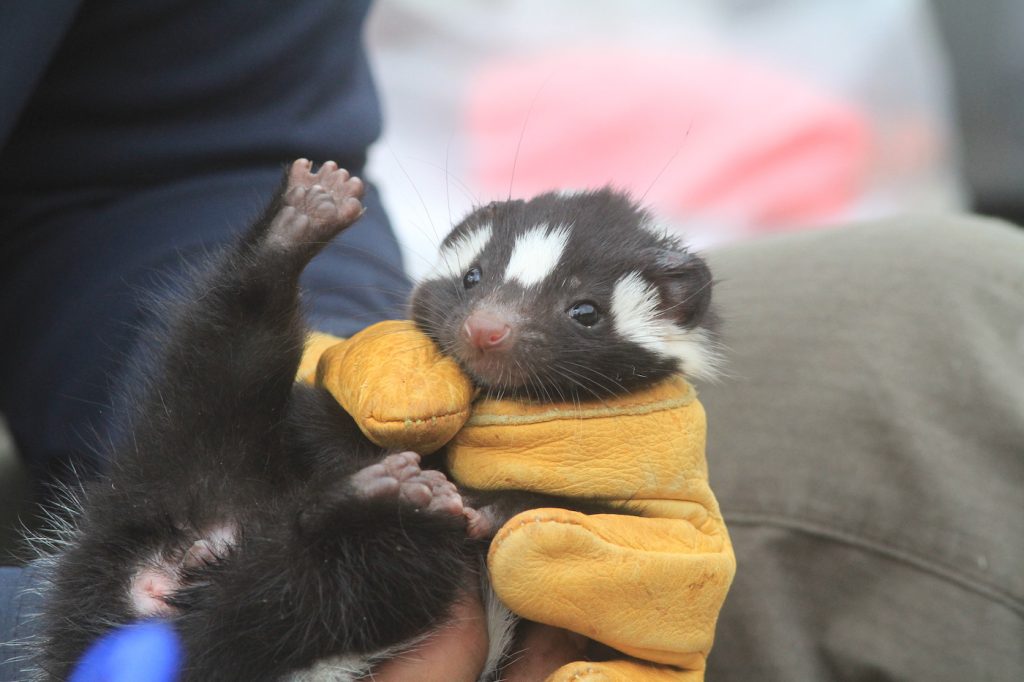
As much information as there is on island foxes, there’s a great deal that’s unknown about the island spotted skunks at the Channel Islands National Park. There are eight California Channel Islands, and five of those are part of the national park. Santa Cruz and Santa Rosa islands are the only two islands with island spotted skunk populations.
“We don’t know very much about the ecological aspects of island spotted skunks,” said Calypso Gagorik, a graduate student at Northern Arizona University, who studies island foxes and island spotted skunks. “However, we hope to learn more in the future as new projects focused on the skunk are developed and implemented.”
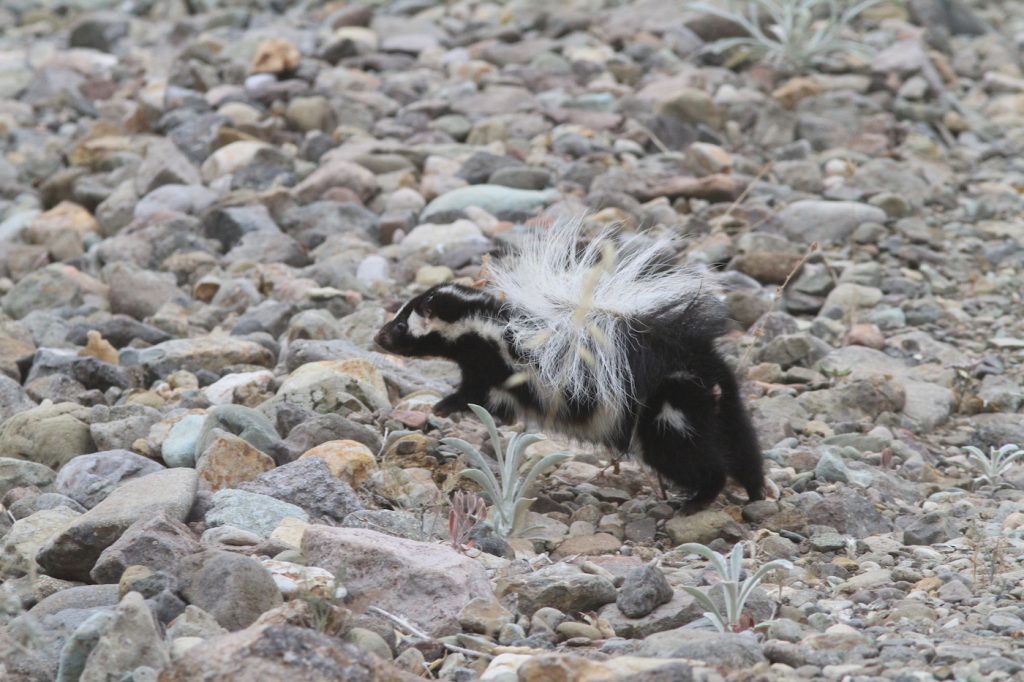
Island spotted skunks are very secretive. In my 25 years of kayaking around the islands, I’ve only seen four island spotted skunks, and two of those had been trapped during island fox monitoring effort. However, I’ve smelled them countless times. With island fox populations healthy and stable across the chain, the two species compete for the same foods such as crickets, mice, and lizards, and run into each other during their nightly hunts.
“Spotted skunks are extremely cryptic,” said Gagorik, as she released a skunk from its cage. “They are hard to catch, which makes them difficult to study.”
It was 9 am when Gagorik let that island spotted skunk go. Four of us milled around, but the skunk showed no signs of wanting to spray us. We humans stood in a dry, seasonal arroyo. The skunk weaved between all of us before hopping across the cobbled creek bed, and finally settling beneath a cluster of coyote bush, silver lupine, and lemonade berry. The island flora would conceal the creature until dusk.







